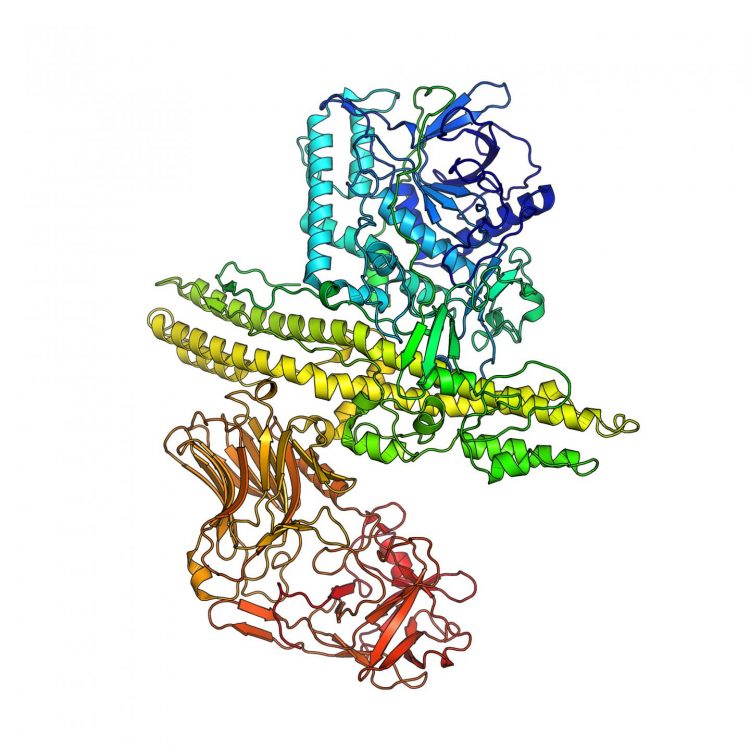New botulinum neurotoxin discovered — potential to treat a number of medical conditions

Structure of the first botulinum neurotoxin (BoNT/A) discovered in 1897. Credit: Pål Stenmark
Since Botulinum neurotoxins are the most toxic substances known, the development of detection methods and treatments is very important.
“The discovery of BoNT/X facilitates the development of diagnostics and countermeasures which is important if someone would be exposed to a toxic amount of the substance”, says Pal Stenmark, Associate Professor, Department of Biochemistry and Biophysics, Stockholm University.
The research team will now develop antibodies with the ability to detect and inactivate the toxin.
“Within a few months we will have developed ways of detecting if a person has been subject to BoNT/X”, says Pal Stenmark.
The researchers will determine the structure of the toxin and investigate how it binds to the nerve cell. They will also investigate how the unique properties of BoNT/X can be best used to develop new therapeutics.
Discovered through an infant in Japan
It all started with an infant in Japan that became ill in 1995. In 2015 the genome of the bacteria isolated from the child was sequenced and deposited in a database. Hidden in the four million letter blueprint of the bacterium, the research team identified the novel toxin.
“When we first discovered this toxin I believed we had made some error in the analysis, but after checking several times it turned out to be correct. This discovery opens a multitude of new exciting research topics that we are eager to explore in collaboration with Dr. Min Dong's research team at Harvard”, says Pal Stenmark.
###
Link to the article “Identification and characterization of a novel botulinum neurotoxin” in Nature Communications: http://www.
For further information, please contact Pal Stenmark, Associate Professor, Department of Biochemistry and Biophysics, Stockholm University, e-mail: stenmark@dbb.su.se, cellphone: +46 739-84 12 16.
Media Contact
All latest news from the category: Life Sciences and Chemistry
Articles and reports from the Life Sciences and chemistry area deal with applied and basic research into modern biology, chemistry and human medicine.
Valuable information can be found on a range of life sciences fields including bacteriology, biochemistry, bionics, bioinformatics, biophysics, biotechnology, genetics, geobotany, human biology, marine biology, microbiology, molecular biology, cellular biology, zoology, bioinorganic chemistry, microchemistry and environmental chemistry.
Newest articles

Sea slugs inspire highly stretchable biomedical sensor
USC Viterbi School of Engineering researcher Hangbo Zhao presents findings on highly stretchable and customizable microneedles for application in fields including neuroscience, tissue engineering, and wearable bioelectronics. The revolution in…

Twisting and binding matter waves with photons in a cavity
Precisely measuring the energy states of individual atoms has been a historical challenge for physicists due to atomic recoil. When an atom interacts with a photon, the atom “recoils” in…

Nanotubes, nanoparticles, and antibodies detect tiny amounts of fentanyl
New sensor is six orders of magnitude more sensitive than the next best thing. A research team at Pitt led by Alexander Star, a chemistry professor in the Kenneth P. Dietrich…





















